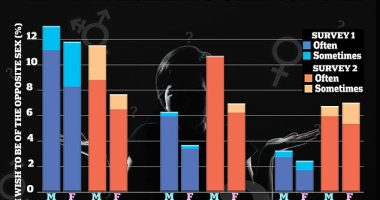The word “hiking” probably conjures up images of mountains, evergreen trees, crunchy dirt paths, and a respite from the company of other humans. The concept of urban hiking, then, may seem like an oxymoron. Instead of dirt, trees, and quiet, it’s all…cement, stoplights, and car exhaust?
But don’t let the initial impression deter you. The benefits of taking an urban hike are as impressive as those of their backcountry counterparts.The benefits of taking an urban hike are as impressive as those of their backcountry counterparts.
“Urban hiking offers a unique blend of outdoor adventure and urban exploration,” says Stephanie Asper, head of social media at trail guide app AllTrails. “It is also a reminder that you don’t actually have to go very far to get outside.”
Experts In This Article
The practice brings the magic of a long, mindful hike close to home, even for those who don’t have the great outdoors anywhere near their doorstep. Urban hiking has gained a steady presence on TikTok and Instagram, as another rebrand of walking alongside hot girl walks and 12-3-30.
What’s behind its rise? “We know how important it is to move our bodies in our daily lives, and there’s a growing effort to make fitness and outdoor activity more accessible—and enjoyable—for a wider audience,” Asper says. “Walking and hiking are activities that are accessible to almost everyone, so it’s no surprise that so many social media trends have emerged around them… These trends serve as a reminder that getting outside or moving your body doesn’t have to be too complicated.”
Intrigued? Grab your trail mix. Here’s how to get started with urban hiking, and why it’s worth a try.
In This Article
What is urban hiking?
Simply put, urban hiking is “a form of walking or hiking that takes place within a city, rather than in a natural or typical hiking setting like a forest or mountain,” says Nichele Cihlar, CSCS, director of training at the rucking gear company GORUCK. “Similar to traditional hiking, you’re still walking, which is a great form of physical activity. You’re also still able to explore different parts of nature such as parks and green spaces even if you’re in an urban environment.”
Really, the concept of urban hiking helps redefine the idea of what a hike is, Asper adds. A hike doesn’t require visiting a national park or donning serious hiking boots. “It really can be as simple as just a long walk,” she says.
What makes it different from other walking trends, then, like hot girl walks? In many cases, urban hiking involves longer distances, some sort of destination (whether a coffee shop, park, or pretty view), and a more mindful approach. That is, it’s often done without listening to music or a podcast and with a greater emphasis on exploration and appreciating the world around you.
Take it from Seattle-based Sara Anfuso (aka @servedbysara), who shares recaps of her urban hikes and long-distance walks on Instagram and TikTok. She used to take regular morning walks with her dad and then, in 2017, went on a school trip to walk the French route of the Camino de Santiago. During her training and experience on the Camino, she fell in love with the practice of long-distance walking (LDW). “I love how meditative it is, how it allows for mental clarity, and time to just think,” she says.
“We know how important it is to move our bodies in our daily lives, and there’s a growing effort to make fitness and outdoor activity more accessible—and enjoyable—for a wider audience.” —Stephanie Asper, head of social media at AllTrails
The benefits of urban hiking
Urban hiking is a form of low-impact exercise that comes with many benefits, including improving cardiovascular health, strengthening muscles, and promoting overall fitness, Cihlar says. Low-impact means you’re not putting much stress on your joints, making it friendlier to beginners or those with injuries compared to high-impact activities like running.
It’s a pretty great workout, too. Walking at a brisk pace for at least 150 minutes a week can help you sleep better, increase energy, improve blood pressure, blood sugar, and blood cholesterol levels, improve mental health and cognition, boost bone strength, and reduce your risk of serious diseases like heart disease, stroke, diabetes, and cancer, according to the American Heart Association.
If you’re walking at a 20-minute-mile pace, you could log that by walking a little over a mile every day or going for two longer walks of about four miles each.
If you want to amp up the physical benefits of an urban hike, try carrying weight on your back (aka rucking), Cihlar says. You can do it by wearing a weighted vest or rucksack, or simply by carrying a backpack stashed with water, snacks, and extra layers, just like you might carry on a traditional hike. Adding weight via a pack or backpack can increase the challenge of your walk, improving aerobic capacity and increasing strength in your lower-body and core muscles, according to the American Council on Exercise.
Urban hiking has mental health benefits, too. “Mentally, urban hiking offers a chance to de-stress and unwind amidst the hustle and bustle of city life, providing a connection to nature even in an urban setting,” Asper says. “Exploring new neighborhoods and discovering new trails can boost curiosity and creativity and give us new appreciation for the diversity and beauty in our everyday places.”
If you can find your way into a park or other green space in your city, you can reap even more mental health perks. Walking in natural environments, including urban green spaces like parks, offers improvements in brain function, psychosocial health, and physical health, including heart rate variability, an important biomarker for stress and anxiety, according to a 2022 study in Cities & Health.
Anfuso, personally, has found long-distanace walking in Seattle to be a valuable mental escape. “I went through a rough patch last fall—mentally and physically—and getting back into walking genuinely helped me get to where I am now,” she says. “It also has allowed me more time and opportunities to be creative. I’m an avid daydreamer, and always have been, so spending the day outside whether in nature or in urbanscapes gives me the space to let my mind wander.”
Worth noting: You can get a walker’s high, just like a runner’s high, Anfuso adds. “I think everyone will find it at a different mile marker. For me, it’s around mile 8 to 10.” So if you’re not feeling the goodness yet, keep training those longer distances, and you’ll find the magic mileage for you.
Finally, urban hiking also provides a great opportunity to connect with your community, Asper says. (And let us remind you: social connections are an important part of wellness, too.) Urban hiking with friends can tick that box, or you can join an organized group like GirlTrek or City Girls Who Walk, which have a presence in many major U.S. cities.
“Mentally, urban hiking offers a chance to de-stress and unwind amidst the hustle and bustle of city life, providing a connection to nature even in an urban setting.” —Stephanie Asper, head of social media at AllTrails
How to get started with urban hiking
Another big benefit of urban hiking is just how easy it is to get started. “Urban hiking makes spending time outside more accessible—it removes barriers of travel and logistics that can be costly, time-consuming, or unavailable to people with disabilities,” Asper says. It’s perhaps the easiest and most economical form of exercise you can do, Cihlar adds: “Just step outside, start walking, and see what your city has to offer.”
You can leave your house with the sole purpose of going on an urban hike, or use the practice as an alternative (and greener) means of transportation. For example, you can urban hike to work, an appointment, a coffee shop, or lunch instead of driving a car, Cihlar says. Walking instead of driving or biking allows you to go slower and enjoy your surroundings.
It’s also fun to motivate yourself by walking to a picturesque view or to try a new brewery, for example. “I love walking to get a treat,” Anfuso says. “It might sound silly, but many of my destinations for long walks are often coffee shops, bakeries, or shops. I think walking is the best way to explore a city’s hidden gems.”
Don’t hesitate to start small. Anfuso is a big fan of what she calls a “block walk.” It’s literally just a walk around the block (or more if it feels right), she says. “It’s about listening to your body and moving without expectations including time, distance, etc.,” she explains. “I think a lot of people think 10K steps per day is unattainable—I find myself in this boat, too—so ‘block walks’ are a great way to incorporate movement into your day as a form of gratitude instead of something you reluctantly have to do to meet a goal.”
Last but not least, remember to have fun. “You’ll be surprised at how many beautiful things you notice when you slow down and be present,” Anfuso says.
Safety tips
You may not need to pack bear spray for an urban hike, but you should still keep these safety tips in mind when heading out.
1. Plan your route ahead of time
If you’re heading into unfamiliar territory solo, it’s best to plan your route ahead of time, so you don’t get lost. “Otherwise, I’ll take a friend or two to cover unfamiliar areas,” Anfuso says. “It’s a good idea to start with shorter, easier trails and gradually work your way up to longer, more challenging routes,” Asper adds. You can research trails using the AllTrails app, and then download the routes to help stay on course during your hike.
2. Stay vigilant
This tip comes courtesy of Anfuso’s dad, who taught her the joys of walking and how to do so safely. “I know that anything can happen while out and about, so safety is incredibly important to me,” she says. Keep an eye on your surroundings and, when in doubt, take a friend.
3. Wear the right gear
One non-negotiable for urban hiking is a good pair of shoes. “Wear supportive footwear suitable for walking long distances,” Asper says. Consider a pair of running shoes or sneakers designed specifically for walking or hiking.
4. Bring water and snacks
A perk of urban hiking, compared to walking in the wilderness, is that you likely won’t ever be far from a place to rest and grab a drink or meal. However, it’s still a good idea to bring a full water bottle and some snacks, just in case, Asper says.
5. Let someone know your plan
If you’re heading out solo, it’s smart to let a friend, partner, or family member know roughly where you’ll be and how long you’ll be gone. Consider sharing your location with them via your cell phone’s location service so they can track your progress and make sure you get home.
6. Listen to your body
Long distances are hard on your body and LDW is an endurance activity, Anfuso says. It’s important to listen to your body: Stop if you need to, stay fueled and hydrated throughout the day, and back off if you feel any pain.
Well+Good articles reference scientific, reliable, recent, robust studies to back up the information we share. You can trust us along your wellness journey.
- Neale, C., Hoffman, J., Jefferson, D., Gohlke, J., Boukhechba, M., Mondschein, A., … Roe, J. (2022). The impact of urban walking on psychophysiological wellbeing. Cities & Health, 6(6), 1053–1066. https://doi.org/10.1080/23748834.2022.2123763
Source: Well and Good








